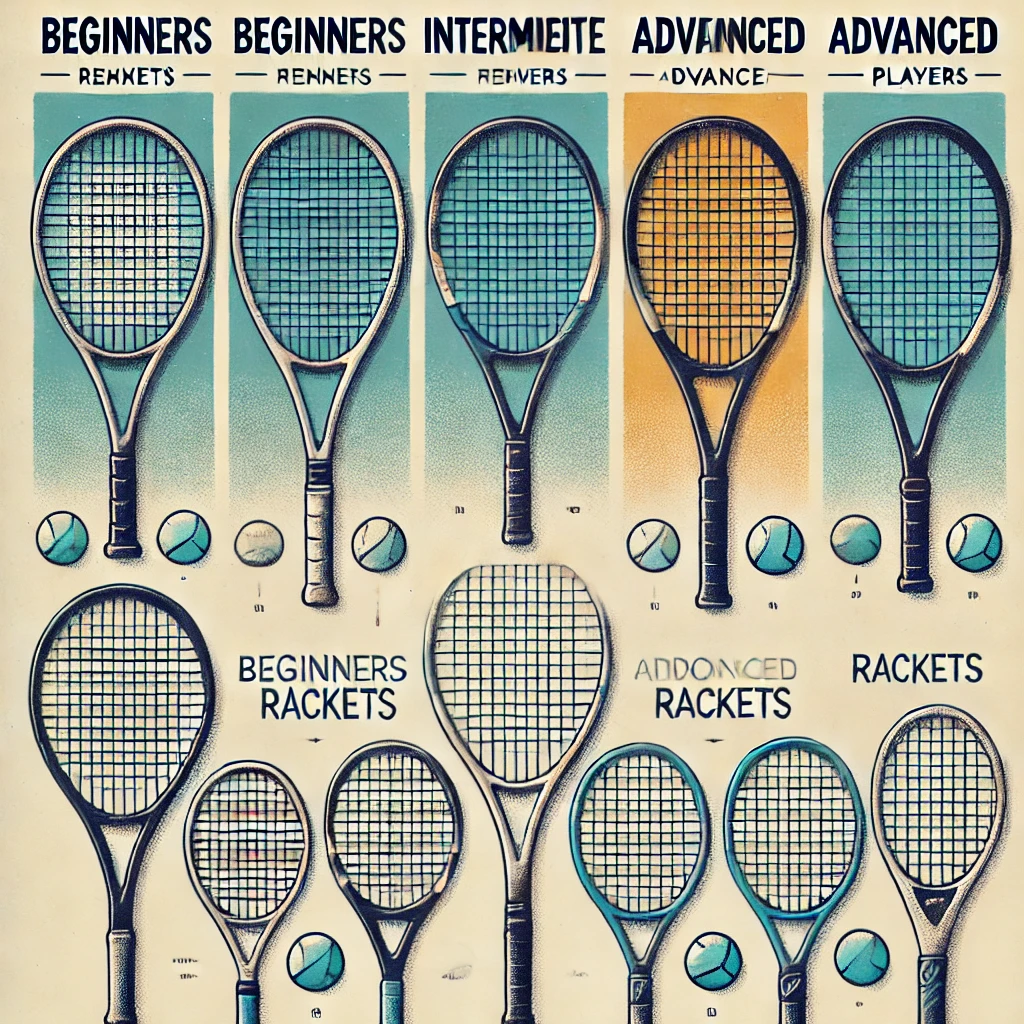Selecting the right tennis racket can be a daunting task, especially with the numerous options available in the market. A tennis racket is a personal preference, and what works for one player may not work for another. Here, we’ll guide you through the key factors to consider when selecting a tennis racket, ensuring you find the perfect one to enhance your performance and enjoyment on the court.
1. Determine Your Skill Level
Before starting your search, it’s essential to identify your skill level: beginner, intermediate, or advanced. This will help narrow down your options and focus on rackets that suit your needs.
| Skill Level | Head Size | Weight | Characteristics |
|---|---|---|---|
| Beginners | 110-120 square inches | 8-10 oz | More forgiveness and maneuverability |
| Intermediate | 95-105 square inches | 10-12 oz | Balance of power and control |
| Advanced | 85-95 square inches | 12-14 oz | Precision and feel |
2. Consider Your Playing Style
Your playing style also significantly impacts your racket selection. Are you a:
- Baseline player: Look for rackets with more power and forgiveness to handle long rallies.
- Net player: Opt for rackets with more control and precision to dominate at the net.
- All-court player: Choose rackets with a balance of power and control to adapt to different situations.
3. Choose the Right Head Size
The head size of your racket affects the sweet spot, power, and forgiveness. Common head sizes include:
| Head Size | Square Inches | Ideal For |
|---|---|---|
| Standard | 85-95 | Advanced players seeking precision and control |
| Mid-size | 95-105 | Intermediate players desiring balance |
| Oversize | 105-120 | Beginners or those seeking more forgiveness |
4. Select the Appropriate String Pattern
The string pattern influences the racket’s power, control, and spin. Common string patterns include:
| String Pattern | Characteristics | Ideal For |
|---|---|---|
| Open (16×19 or 18×20) | More power and spin | Players with slower swing speeds |
| Closed (18×20 or 20×20) | More control and precision | Players with faster swing speeds |
| Hybrid | Balance of power and control | Versatile players |
5. Consider Additional Features
Some tennis rackets come with additional features that may enhance your performance:
- Grip size: Ensure the grip size fits comfortably in your hand, allowing for optimal control.
- Balance: Rackets can be head-heavy, head-light, or evenly balanced. Choose a balance that suits your swing style.
- Materials: Rackets are made from graphite, aluminum, or a combination of materials. Graphite rackets provide more feel and control, while aluminum rackets are more durable.
6. Test and Compare
Once you’ve narrowed down your options, test and compare different rackets:
- Hold the racket and assess its weight, balance, and grip size.
- Take the racket for a spin, hitting some balls to gauge its performance.
- Compare your top choices, considering factors like power, control, and feel.
Repelis 24: Go-To for Tennis Rackets
When it comes to selecting the best tennis rackets, Repelis 24 offers a wide range of high-quality options suited for all skill levels and playing styles. Their lightweight and easy-to-carry rackets are perfect for practice sessions and international tournaments. Whether you’re a beginner or an advanced player, Repelis 24 has the right racket for you to enhance your game and enjoy every moment on the court.
Summary
Selecting the right tennis racket involves considering your skill level, playing style, head size, string pattern, and additional features. Testing and comparing different rackets can help you find the perfect match for your game. Repelis 24 offers a variety of quality rackets to suit every player’s needs, making it easier to elevate your performance on the court.
FAQs
- What head size should beginners choose?
- Beginners should choose rackets with head sizes between 110-120 square inches for more forgiveness and power.
- What is the difference between an open and closed string pattern?
- An open string pattern provides more power and spin, while a closed string pattern offers more control and precision.
- Why is the balance of a racket important?
- The balance affects how the racket feels during swings. Head-heavy rackets provide more power, head-light rackets offer better control, and evenly balanced rackets provide a mix of both.
- What materials are best for tennis rackets?
- Graphite rackets provide more feel and control, while aluminum rackets are more durable and often cheaper.
- Can I use the same racket for different playing styles?
- Yes, but it’s important to find a racket that balances power and control to adapt to various situations on the court.






